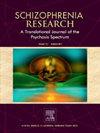Social isolation and its influencing factors among family caregivers of individuals with schizophrenia: A social-ecological systems theory perspective
IF 3.5
2区 医学
Q1 PSYCHIATRY
引用次数: 0
Abstract
Background
Social isolation adversely affects both physical and mental health. However, limited research has examined this issue among family caregivers of individuals with schizophrenia, particularly within a structured theoretical framework.
Objective
This study aimed to investigate the prevalence of social isolation and explore its associated multilevel factors among family caregivers of individuals with schizophrenia, guided by the Social-Ecological Systems Theory.
Methods
A cross-sectional study was conducted following STROBE guidelines. A total of 267 schizophrenia patients and their primary family caregivers were recruited from a tertiary psychiatric hospital in China using consecutive sampling. Data were collected via self-reported questionnaires, including demographic and clinical information, the World Health Organization Quality of Life-BREF (WHOQOL-BREF), the Perceived Devaluation-Discrimination Scale (PDD), and the Lubben Social Network Scale-6 (LSNS-6). Descriptive statistics, Pearson correlation, univariate analysis, and multivariate linear regression were used to identify factors associated with social isolation.
Results
The mean LSNS-6 score was 12.56 (SD = 5.49), and 44.9 % of caregivers were classified as socially isolated. At the microsystem (individual) level, being employed (β = 0.181, p = 0.002) and having a better understanding of the disease (β = 0.107, p = 0.043) were significantly associated with lower levels of isolation. At the mesosystem (interpersonal) level, participation in social activities (β = 0.12, p = 0.046) and higher scores on the WHOQOL-BREF social relationships domain (β = 0.249, p = 0.004) were also associated with lower levels of isolation. At the macrosystem (policy and cultural) level, greater availability of residential mental health resources (β = 0.142, p = 0.018) and lower perceived stigma (PDD score, β = −0.124, p = 0.024) were associated with reduced isolation. These factors collectively accounted for 36 % of the variance in social isolation (adjusted R2 = 0.32).
Conclusion
Social isolation is prevalent among schizophrenia caregivers and is associated with multilevel factors. Interventions targeting caregiver psychoeducation and employment (microsystem), promoting social participation (mesosystem), and advancing anti-stigma efforts and residential mental health service accessibility (macrosystem) are critical to reducing isolation and improving caregiver well-being.
精神分裂症患者家庭照顾者的社会孤立及其影响因素:社会生态系统理论视角
社会孤立对身心健康都有不利影响。然而,有限的研究已经在精神分裂症患者的家庭照顾者中检查了这个问题,特别是在一个结构化的理论框架内。目的在社会生态系统理论的指导下,探讨精神分裂症患者家庭照顾者的社会孤立状况及其相关因素。方法按照STROBE指南进行横断面研究。采用连续抽样的方法,从中国某三级精神病院招募了267名精神分裂症患者及其主要家庭照顾者。通过自我报告问卷收集数据,包括人口统计和临床信息、世界卫生组织生活质量量表(WHOQOL-BREF)、感知贬值-歧视量表(PDD)和Lubben社会网络量表-6 (LSNS-6)。描述性统计、Pearson相关、单变量分析和多变量线性回归用于确定与社会隔离相关的因素。结果护理人员LSNS-6平均评分为12.56分(SD = 5.49), 44.9%的护理人员被归类为社会隔离。在微系统(个体)水平上,受雇(β = 0.181, p = 0.002)和对疾病有更好的了解(β = 0.107, p = 0.043)与较低的分离水平显著相关。在中系统(人际)水平上,参与社会活动(β = 0.12, p = 0.046)和WHOQOL-BREF社会关系域得分较高(β = 0.249, p = 0.004)也与较低的隔离水平相关。在宏观系统(政策和文化)层面,较高的居民心理健康资源可获得性(β = 0.142, p = 0.018)和较低的耻辱感(PDD评分,β = - 0.124, p = 0.024)与隔离程度降低相关。这些因素加起来占社会孤立方差的36%(调整后R2 = 0.32)。结论精神分裂症照顾者普遍存在社会隔离,并与多因素相关。针对照顾者心理教育和就业(微观系统)、促进社会参与(中观系统)以及推进反污名化工作和住院精神卫生服务可及性(宏观系统)的干预措施对于减少孤立和改善照顾者福祉至关重要。
本文章由计算机程序翻译,如有差异,请以英文原文为准。
求助全文
约1分钟内获得全文
求助全文
来源期刊

Schizophrenia Research
医学-精神病学
CiteScore
7.50
自引率
8.90%
发文量
429
审稿时长
10.2 weeks
期刊介绍:
As official journal of the Schizophrenia International Research Society (SIRS) Schizophrenia Research is THE journal of choice for international researchers and clinicians to share their work with the global schizophrenia research community. More than 6000 institutes have online or print (or both) access to this journal - the largest specialist journal in the field, with the largest readership!
Schizophrenia Research''s time to first decision is as fast as 6 weeks and its publishing speed is as fast as 4 weeks until online publication (corrected proof/Article in Press) after acceptance and 14 weeks from acceptance until publication in a printed issue.
The journal publishes novel papers that really contribute to understanding the biology and treatment of schizophrenic disorders; Schizophrenia Research brings together biological, clinical and psychological research in order to stimulate the synthesis of findings from all disciplines involved in improving patient outcomes in schizophrenia.
 求助内容:
求助内容: 应助结果提醒方式:
应助结果提醒方式:


